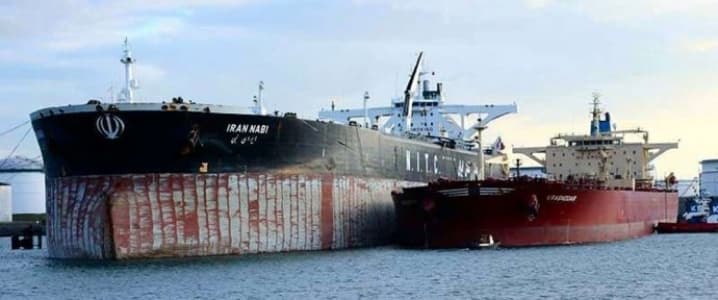It has been ten months since the international community lifted sanctions against Iran’s oil and gas sector, paving the way for the country to rebuild its lost production capacity and fight for its fair market share.
Figures from Bloomberg show Iran’s September production rate at 3.63 million barrels a day – set to increase to and stabilize at just over 4 million bpd in the next few weeks.
If all goes as planned, Tehran’s oil officials will sign $10 billion in new oil and gas deals by the end of the fiscal year in March, according to Amirhossein Zamaninia, Iran’s deputy oil minister for international affairs.
The mega-sized South Azadegan oilfield, which sits on the Iran-Iraq border, will kick off the return of foreign capital to the country’s energy sector and "likely propel the petrochemical ventures to get off the ground faster than the new oil and gas ventures,” the official said.
On Monday, the ministry began taking applications from foreign companies for an unspecified number of new oil and gas projects. Multinational firms have until November 19th to submit their qualifications to bid on Iranian projects, and by December, the foreign companies that are eligible to participate in the nation’s new era of energy production will be announced.
"China has done enough investment in Iran," Mansour Moazami, former deputy oil minister and chairman of the Industrial Development and Renovation Organization told The Chicago Tribune. "We will provide opportunities and chances for others.”
A $10 billion goal in the current bear market looks difficult to achieve, but energy investments in oil-rich Iran have been at a standstill for several years now. And the cogs in the machine are beginning to turn—especially in the domestic front.
Persia Oil and Gas Industry Development Co., a subsidiary of the Iranian holding company Setad Ejraiye Farmane Emam, became the first country to receive one of the government’s new Iran Petroleum Contracts (IPC). The company will develop three small- and medium-sized oilfields in the southern oil-rich province of Khuzestan, according to the terms of the agreement, which also include a provision to allow the full recovery of costs for almost 20 years. Related: Oil Futures: Who Is Trading What?
Earlier this year, oil officials approved 11 Iranian firms to work with international companies on the to-be-announced projects. Roham Ghasemi, the CEO of Petroiran, one of the approved firms, told Shana on Friday that his company had “identified and reached a preliminary agreement with our possible foreign partners in offshore IPC projects.”
In addition, Royal Dutch Shell and an unnamed Italian-German firm agreed to conduct a feasibility study at an unspecified site recently.
As development restarts, the oil ministry says it will give priority to exploration and production initiatives in fields that Iran shares with its neighbors. The Los Angeles Times counts 28 such offshore and onshore fields – all ready to be harvested to give Iran a one-million-barrel per day national production boost over the next decade.
When the cabinet approved the new contracts in August, the government aimed to attract $50 billion in investments every year due to the structural improvements. By comparison, a $10 billion target as Iran enters the international arena after years of sanctions seems modest—especially because the country expects to be exempted from any production freeze agreed upon by the Organization of Petroleum Exporting Countries (OPEC) next month.
ADVERTISEMENT
Investment-wise, Iran is at rock bottom, and the sky is the limit.
By Zainab Calcuttawala for Oilprice.com
More Top Reads From Oilprice.com:
- Near Term Oil Prices Can’t Go Much Higher
- Russia Says Six-Month Oil Output Freeze Most Efficient
- Is Clean Coal An Option For India?


















